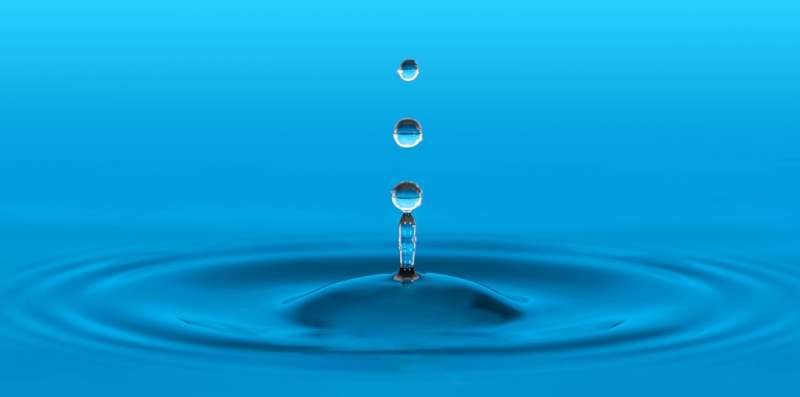February 2, 2022 report
Evidence found for existence of two forms of liquid water

Yoshiharu Suzuki, a researcher with the Research Center for Advanced Measurement and Characterization, National Institute for Materials Science in Japan, has found evidence for the existence of two forms of liquid water. In his paper published in Proceedings of the National Academy of Sciences, he outlines an experiment he conducted with trehalose and what he learned from it.
In the 1970s, a team of researchers working at Boston University suggested that there might be two forms of liquid water—their arguments were convincing enough that many researchers have conducted experiments since then to verify them. Then, in 2014, Suzuki, working with colleague Osamu Mishima, tested the idea of using an emulsion to disperse tiny drops of water as the temperature of a solution was lowered below freezing. The two reported that there were signs of a liquid-liquid transition but no direct evidence. In that effort, the pair used glycerol solutions. In this new effort, Suzuki conducted similar experiments, but this time used trehalose for the solute. Trehalose is a type of sugar produced naturally in some organisms as a form of antifreeze.
The experiment by Suzuki involved pressurizing a small amount of the solute to approximately 0.6 GPa and then lowering the temperature to 159 K. He then repressurized the solution. In so doing, he found that the solute underwent a glassy phase, which prevented the solution from separating into solute and pure ice phases. As the temperature reduced, Suzuki found that the density of the solute increased before it became glassy and then decreased once again as the temperature rose. He suggests the change in density of the solute shows the liquids existing in two forms—and since the solute was water-based, the experiment showed that water could exist in two forms.
Suzuki suggests the change in density was an example of a first-order transition and that it showed that such liquid transitions must begin with a nucleus of sorts and then grow. He further suggests that the actual transition appeared to happen inside of a hysteresis loop. The width of the loop, he contends, grew smaller as temperatures rose, and vice versa—and might disappear at 170K—a point that could represent the point of transition. He acknowledges that more is required to prove his theories, but suggests his work does show that water has two liquid forms.
More information: Yoshiharu Suzuki, Direct observation of reversible liquid–liquid transition in a trehalose aqueous solution, Proceedings of the National Academy of Sciences (2022). DOI: 10.1073/pnas.2113411119
Journal information: Proceedings of the National Academy of Sciences
© 2022 Science X Network





















